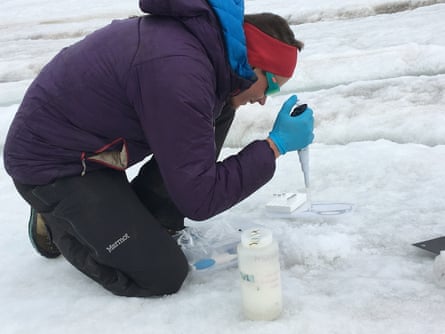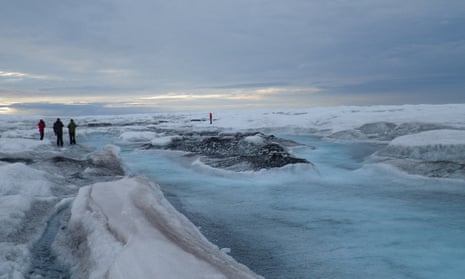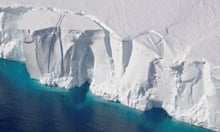Hundreds of thousands of tonnes of bacteria are being released by melting glaciers, a study has shown.
The microbes being washed downstream could fertilise ecosystems, the researchers said, but needed to be much better studied to identify any potential pathogens.
The scientists said the rapid melting of the ice by the climate crisis meant the glaciers and the unique microbial ecosystems they harboured were “dying before our eyes”, leaving researchers racing to understand them before they disappeared.
Some of the microbes may also be a future source of useful biological molecules, such as new antibiotics.
The scientists collected surface meltwaters from eight glaciers across Europe and North America and from two sites on the Greenland ice cap. They found tens of thousands of microbes in each millilitre of water.

The data enabled them to estimate the bacteria and algae being flushed out would deliver an average of 650,000 tonnes of carbon a year for the next 80 years in the northern hemisphere, excluding the Himalaya Hindu Kush region, which was not sampled. This estimate assumes a continued modest rise in CO2 emissions. If carbon emissions are cut, slowing global heating and ice melting, the mass of microbes released would be reduced by about a third.
“We are seeing the glaciers die before our eyes, affecting the microbes that are there, with implications for us locally and globally,” said Dr Arwyn Edwards, at Aberystwyth University in Wales, and part of the study team. “The mass of microbes released is vast even with moderate warming.”
“We don’t have enough data to understand the value and the threat of these organisms. I routinely get inquiries about whether there is going to be a doomsday pathogen melting out of the glaciers. I think that’s a very minor risk, but it’s not a zero risk, so we need risk assessment of these microbes.”
Until recently, very little was known about the many thousands of microbial species inhabiting the surface of ice. Almost 1,000 new species were revealed in Tibetan glaciers in June. A consortium of researchers, the Vanishing Glaciers Project (VGP), is conducting expeditions around the world to collect samples and assess this biodiversity.
Prof Tom Battin, at the Swiss Federal Institute of Technology Lausanne and part of VGP, said people should not be concerned about pathogens emerging from the ice. He also said most of the ice microbes did not seem to persist downstream.
after newsletter promotion
Other recent research on viruses in Lake Hazen in Canada, the largest high Arctic freshwater lake in the world, suggested that the risk of viruses spilling over to new hosts was higher at locations close to where large amounts of glacial meltwater flowed in.
The new research, published in the Communications Earth and Environment journal, used surface meltwater samples from four glaciers in the European Alps, as well as glaciers in Canada, Sweden, Svalbard, and the western Greenland ice sheet.
The study found that hundreds of thousands of tonnes of microbes would be released every year in all future scenarios for global heating. The bacteria and algae usually contain pigments to protect themselves from damage from sunlight. But these dark pigments absorb sunlight, adding to warming and speeding up the destruction of their icy habitat.








